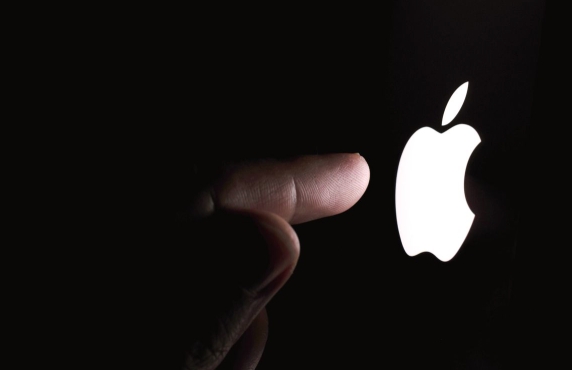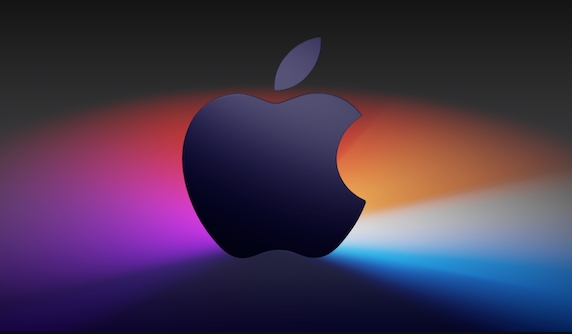How to completely remove a program from mac os
Jul 28, 2025 am 02:40 AMTo completely uninstall programs on macOS, you must manually delete the application and its associated files; first drag the application from the "Applications" folder to the Trash, and then delete the relevant support files in ~/Library/Application Support, ~/Library/Preferences, ~/Library/Caches, ~/Library/Containers, and ~/Library/Logs through "Go to Folder". Then remove the login item in the system settings, delete the relevant extensions in the browser, and use third-party tools such as AppCleaner to automatically scan the residual files if necessary, and finally clear the Trash to completely delete all files, so as to ensure that the program is completely removed and avoid taking up space or causing conflicts.

Uninstalling a program on macOS isn't always as simple as dragging the app to the Trash. Many apps leave behind support files, preferences, caches, and other data that can take up space or cause conflicts. To completely remove a program from macOS , follow these steps:

1. Remove the App from Applications
Start with the basics:
- Open Finder .
- Go to the Applications folder.
- Locate the app you want to remove.
- Drag it to the Trash , or right-click and select Move to Trash .
?? This removes the main app, but not all associated files.

2. Delete Related Support Files and Preferences
Apps often store data in hidden folders in your user directory. Here's where to look:
Open Finder , then press Shift Command G to bring up “Go to Folder,” and enter each of the following paths one by one:

~/Library/Application Support/
~/Library/Application Support/
Look for a folder with the app's name or developer and delete it.
~/Library/Preferences/
~/Library/Preferences/
Search for .plist files related to the app (eg, com.company.appname.plist ).
~/Library/Caches/
~/Library/Caches/
Delete any cache folders associated with the app.
~/Library/Containers/ (for sandboxed apps)
~/Library/Containers/
Some apps (especially from the Mac App Store) store data here.
~/Library/Logs/
~/Library/Logs/
Remove any app-specific log folders if present.
? Tip: The
~means your user home folder. These Library folders are hidden by default in newer macOS versions, which is why you need to use “Go to Folder.”
3. Check for Login Items and Extensions
Some apps add themselves to start automatically or install system extensions.
Remove Login Items:
- Go to Apple Menu > System Settings (or System Preferences) .
- Click General > Login Items .
- Select any entries related to the app and click the – button to remove.
Remove Browser Extensions (if applicable):
- Open Safari, Chrome, or Firefox.
- Go to Extensions or Add-ons.
- Uninstall any extensions tied to the removed app.
Remove Menu Bar or System Extensions:
- Some apps install status menu extras (eg, in the top-right corner).
- Right-click and see if there's an option to remove, or check the app's settings before uninstalling.
4. Use a Third-Party Uninstaller (Optional but Helpful)
If you'd rather not manually hunt down every file, use a trusted uninstaller tool:
- AppCleaner (Free): Lightweight and effective. Just drag the app into it, and it finds related files for deletion.
- CleanMyMac X (Paid): Offers deeper system cleanup, including uninstaller, junk removal, and malware scan.
- AppZapper (Paid): Long-standing favorite for through app removal.
These tools automate the process and help ensure nothing is left behind.
5. Empty the Trash
After deleting the app and its files:
- Right-click the Trash icon and select Empty Trash .
- This permanently removes all files.
? If the app required admin rights, you might be prompted for your password during deletion.
Summary Checklist
To make sure you've fully removed a program:
- [ ] App moved from Applications to Trash
- [ ] Support files deleted from
~/Library/Application Support - [ ] Preferences (.plist) removed from
~/Library/Preferences - [ ] Caches cleared from
~/Library/Caches - [ ] Containers or extensions removed if applicable
- [ ] Login items disabled
- [ ] Trash emptied
It's not complicated, but skipping the Library files means you're not really “completely” removing the app. A little extra effort keeps your Mac clean and running smoothly.
The above is the detailed content of How to completely remove a program from mac os. For more information, please follow other related articles on the PHP Chinese website!

Hot AI Tools

Undress AI Tool
Undress images for free

Undresser.AI Undress
AI-powered app for creating realistic nude photos

AI Clothes Remover
Online AI tool for removing clothes from photos.

Clothoff.io
AI clothes remover

Video Face Swap
Swap faces in any video effortlessly with our completely free AI face swap tool!

Hot Article

Hot Tools

Notepad++7.3.1
Easy-to-use and free code editor

SublimeText3 Chinese version
Chinese version, very easy to use

Zend Studio 13.0.1
Powerful PHP integrated development environment

Dreamweaver CS6
Visual web development tools

SublimeText3 Mac version
God-level code editing software (SublimeText3)
 Where is the pycharm interpreter?
May 23, 2025 pm 10:09 PM
Where is the pycharm interpreter?
May 23, 2025 pm 10:09 PM
Setting the location of the interpreter in PyCharm can be achieved through the following steps: 1. Open PyCharm, click the "File" menu, and select "Settings" or "Preferences". 2. Find and click "Project:[Your Project Name]" and select "PythonInterpreter". 3. Click "AddInterpreter", select "SystemInterpreter", browse to the Python installation directory, select the Python executable file, and click "OK". When setting up the interpreter, you need to pay attention to path correctness, version compatibility and the use of the virtual environment to ensure the smooth operation of the project.
 The difference between programming in Java and other languages ??Analysis of the advantages of cross-platform features of Java
May 20, 2025 pm 08:21 PM
The difference between programming in Java and other languages ??Analysis of the advantages of cross-platform features of Java
May 20, 2025 pm 08:21 PM
The main difference between Java and other programming languages ??is its cross-platform feature of "writing at once, running everywhere". 1. The syntax of Java is close to C, but it removes pointer operations that are prone to errors, making it suitable for large enterprise applications. 2. Compared with Python, Java has more advantages in performance and large-scale data processing. The cross-platform advantage of Java stems from the Java virtual machine (JVM), which can run the same bytecode on different platforms, simplifying development and deployment, but be careful to avoid using platform-specific APIs to maintain cross-platformity.
 How to stop Microsoft Edge automatic updates
May 21, 2025 am 10:12 AM
How to stop Microsoft Edge automatic updates
May 21, 2025 am 10:12 AM
How to stop Microsoft Edge Automatically Update Microsoft Edge is the default browser that comes with Windows 11. Earlier, the Edge browser received updates as the Windows operating system was updated. However, the Edge browser based on Chromium has changed that. The browser will now automatically update in the background without your knowledge. In this article, we will explain how to stop automatic Microsoft Edge updates in Windows 11 and macOS. Related: How to disable automatic updates in Google Chrome? Check for automatic edge updates Chromium-based Edge vs. Goo based on Chromium backend code
 Commands and configurations for starting Apache service in macOS system
May 16, 2025 pm 10:00 PM
Commands and configurations for starting Apache service in macOS system
May 16, 2025 pm 10:00 PM
The command to start the Apache service on macOS is sudoapachectlstart, and the configuration file is located in /etc/apache2/. The main steps include: 1. Edit the httpd.conf file, modify the Listen port such as Listen8080; 2. Adjust the DocumentRoot path to the personal directory such as /Users/your_username/Sites, and update the corresponding permission settings; 3. Use the sudoapachectlgraceful command to restart Apache to ensure that the configuration takes effect; 4. Enable the mod_deflate module to compress data to improve page loading speed.
 MySQL installation tutorial teach you step by step the detailed steps for installing and configuration of mySQL step by step
May 23, 2025 am 06:09 AM
MySQL installation tutorial teach you step by step the detailed steps for installing and configuration of mySQL step by step
May 23, 2025 am 06:09 AM
The installation and configuration of MySQL can be completed through the following steps: 1. Download the installation package suitable for the operating system from the official website. 2. Run the installer, select the "Developer Default" option and set the root user password. 3. After installation, configure environment variables to ensure that the bin directory of MySQL is in PATH. 4. When creating a user, follow the principle of minimum permissions and set a strong password. 5. Adjust the innodb_buffer_pool_size and max_connections parameters when optimizing performance. 6. Back up the database regularly and optimize query statements to improve performance.
 Which is better, uc browser or qq browser? In-depth comparison and evaluation of uc and qq browsers
May 22, 2025 pm 08:33 PM
Which is better, uc browser or qq browser? In-depth comparison and evaluation of uc and qq browsers
May 22, 2025 pm 08:33 PM
Choosing UC browser or QQ browser depends on your needs: 1. UC browser is suitable for users who pursue fast loading and rich entertainment functions; 2. QQ browser is suitable for users who need stability and seamless connection with Tencent products.
 How to uninstall programs in Windows 11?
Jun 30, 2025 am 12:41 AM
How to uninstall programs in Windows 11?
Jun 30, 2025 am 12:41 AM
There are three main ways to uninstall programs on Windows 11: 1. Uninstall through "Settings", open the "Settings" > "Apps" > "Installed Applications", select the program and click "Uninstall", which is suitable for most users; 2. Use the control panel, search and enter "Control Panel" > "Programs and Functions", right-click the program and select "Uninstall", which is suitable for users who are accustomed to traditional interfaces; 3. Use third-party tools such as RevoUninstaller to clean up more thoroughly, but pay attention to the download source and operation risks, and novices can give priority to using the system's own methods.
 How to update the system's own software
May 19, 2025 pm 06:48 PM
How to update the system's own software
May 19, 2025 pm 06:48 PM
Updating the software that comes with macOS is simple and important because it can fix bugs, improve performance, bring new features and security improvements. You can update through the "Software Update" option in "System Settings" or "System Preferences" and follow the prompts. If you encounter problems, try restarting your Mac or checking your network connection, and the Apple Support page also provides a solution. It is recommended to keep the system up to date, back up data before update, and ensure Wi-Fi and sufficient storage space. Update details can be viewed on Apple's official website.







